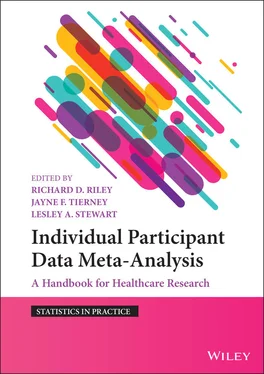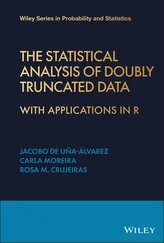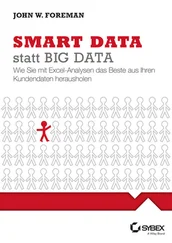3.4 Assessing Feasibility and ‘In Principle’ Support and Collaboration
Having concluded that an IPD meta‐analysis is warranted ( Section 2.6) and used the development of a project scope to work through design and organisational issues, it is important to assess whether the project is likely to be feasible – in particular, whether sufficient IPD will be available to support credible analysis.
It is worth bearing in mind that it is not always possible or necessary to obtain IPD from every eligible trial. IPD from some older trials may have been lost or destroyed, important participant‐level outcomes or covariates may not have been collected in some trials, and not all investigators may wish to collaborate. Deciding how many trials are sufficient for the IPD meta‐analysis project to proceed is not straightforward, and depends not only on the number of trials likely to be available, but on their size and which outcome and covariate data are available, as these influence the statistical power that the IPD meta‐analysis will have ( Chapter 12). For example, when examining participant‐level covariates, the within‐trial variability of covariate values is also influential toward the power of an IPD meta‐analysis, in additional to the total number of participants and events. 33
Box 3.2Extract of the scope developed for the Evaluating Progestogens for Preventing Preterm birth International Collaborative (EPPPIC) IPD meta‐analysis
Main Aims
1 Effectiveness of any progestogen versus no active intervention(co‐treatment is permitted)
2 Effectiveness of vaginally administered progesterone versus 17‐OHPC(co‐treatment is permitted)
Exploring potential differences in effectiveness according to type of progestogenand route of administration.
Considering impact on preterm birth(<37 weeks, <34 weeks, <28 weeks), fetal/neonatal death, serious neonatal complications, infant disabilityand important maternal morbidity.
In asymptomaticwomen considered at high risk of preterm birth, but notat immediate risk of preterm birth, and notthose for whom progestogen is administered to prevent miscarriage and does not continue beyond 16 weeks of gestation.
Separateevaluation of singleton and of multi-fetalpregnancies exploring:
Whether effectiveness differs according to key risk factors at trial entry(previous spontaneous preterm birth, multiple gestation pregnancy, cervical length, positive fetal fibronectin test) and additional trial and patient‐level characteristics to investigate whether there are particular types of woman or pregnancy that derive greater benefit (or harm) from intervention.
….
Included: Trials including asymptomatic women considered at increased risk of preterm birth
Excluded: Trials of progestogen given to women only before 16 weeks to prevent miscarriage; trials of progestogen administered for immediately threatened preterm labour including PPROM and/or uterine contractions
Included: Trials evaluating any form of progestogen (natural progesterone, 17‐OHPC and medroxyprogesterone acetate delivered by any route (vaginal gels, capsules, suppositories, intramuscular, intravenous injection, oral)
Excluded: Trials that ceased administration of progestogen prior to 16 weeks of pregnancy
Included: Trials of progestogen versus placebo or no intervention; trials of vaginally administered progesterone versus 17‐OHPC
Included: All trials that meet the above criteria will be included and contribute to the IPD meta‐analysis project’s pre‐specified outcomes (above) for which they collected data
Included: Randomised controlled parallel group trials
Excluded: Quasi randomised trials, cluster randomised trials, cross‐over trials
Source: Lesley Stewart.
If many small trials are unavailable, this may have little impact on an IPD meta‐analysis project, because they will usually add little information to the analyses ( Section 2.6.3). Conversely, if IPD are not available for several large trials, this may raise serious questions about feasibility.
If the available trials are in keeping with current practice, and the unavailable trials are old and less relevant, it may not be necessary to include the older trials, and it may even be better to exclude them (although it is preferable to identify and address this through tighter eligibility criteria when developing the project scope). If unavailable trials are deemed at high risk of bias, their omission could in fact lead to more robust results. There may even be an element of self‐selection, if those responsible for low‐quality trials, or in extremis, fraudulent trials may decline to participate because their data would not stand up to scrutiny.
Determining whether available data will be sufficient for credible analysis requires ascertaining what trials are likely to make data available. This may include gauging whether trial investigators would, in principle, be willing to share their IPD and/or establishing what data are available in repositories, and on what terms.
Before contacting trial investigators to request in principle agreement to partner in the IPD meta‐analysis, the team should ascertain whether any clarification about their trial’s eligibility is needed, for example, whether the trial population matches the IPD project’s inclusion criteria. These enquiries may be particularly important in clarifying trial design factors, such as details of randomisation and allocation concealment, which are often not well reported in trial publications. This information might then be used as part of an initial informal risk of bias assessment for each trial, if, for example, only those trials at low risk of bias are to be included in the IPD meta‐analysis. Whilst undertaking full risk of bias assessment (based on trial publications) can be done, it is not generally essential at this stage. It can however be helpful to explore key domains. Section 4.6discusses risk of bias assessment and its relationship with data retrieval and checking. Initial communications with trial investigators should therefore be clear that their trial is potentially eligible for inclusion in the IPD project and request any additional information required to determine eligibility. Subsequently, any trials found to be inappropriate (e.g. due to inclusion criteria, design, or high risk of bias), should be excluded as early as possible and with little inconvenience for trial investigators.
When seeking in principle agreements and trying to establish feasibility, it should be borne in mind that trial investigators may not pledge support until it is certain that the IPD meta‐analysis project will go ahead, or until they know that certain other trial investigators are participating. This can make it challenging to provide an early assessment of feasibility, for example, within a funding application. Building collaboration is time consuming and an iterative process such that the decision to go ahead with an IPD meta‐analysis project almost always involves a leap of faith, and a judgement that even though not all data are yet pledged, there is a reasonable chance that, with persistence ( Section 4.3), additional trials can be brought on board as the project progresses.
Читать дальше












